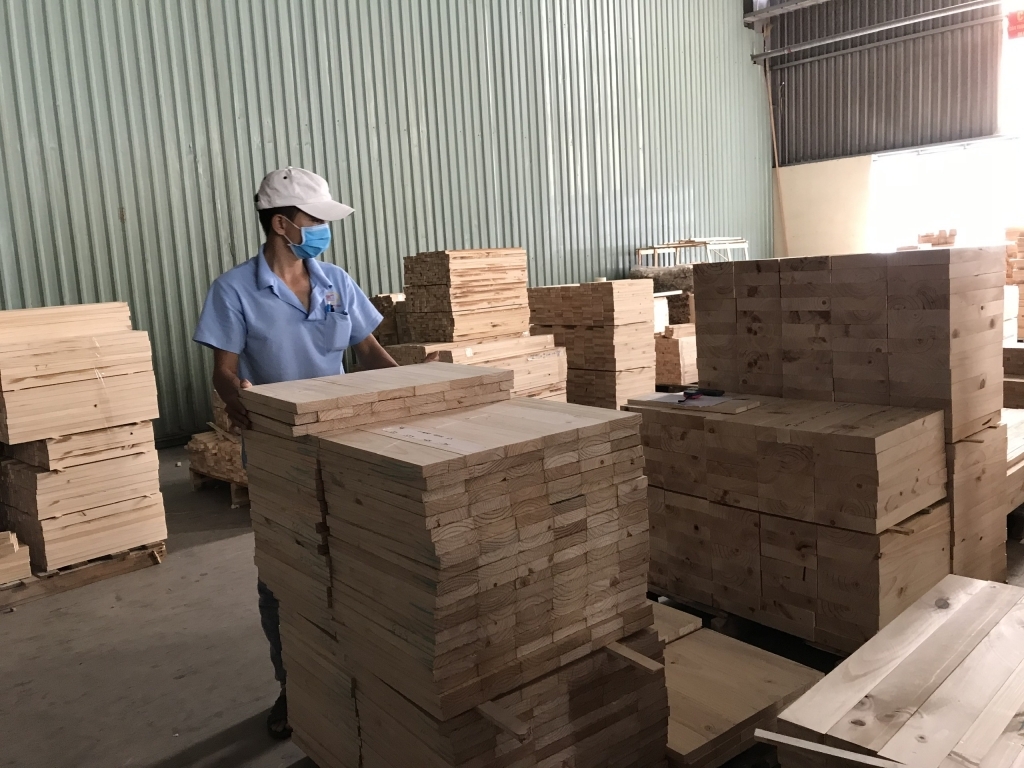Wood industry faces fierce competition for imported raw materials
Vietnam's wood processing and exporting enterprises will have to compete fiercely with businesses from other countries for imported raw wood sources, especially in the important markets for supplying wood materials to Vietnam, which are the EU and the United States.
 |
|
Many businesses in the wood industry are very concerned about the scarce supply of raw materials and high prices. Photo: Nguyen Thanh |
Both wood exports and imports with Russia are low
According to the report "The impact of the Russia-Ukraine war on the current and future Vietnamese wood industry" published at the seminar "Russia-Ukraine conflict and its potential impact on Vietnam's wood industry" on March 9, Russia is not an important market for Vietnam's wood raw materials.
In 2021, wood import turnover from Russia will reach about US$55 million, equivalent to 2% of the total import turnover of Vietnam's wood materials from all sources in the same year. Sawn timber, plywood and veneer are the main imported products, with sawn timber import turnover accounting for over 80% of total import turnover.
In the opposite direction, in the consumption markets of wood products of Vietnam, Russia is a very small market. In 2021, Vietnam's export turnover of wood and wood products to this market will only reach about US$7.3 million, equivalent to 0.05% of the total export turnover of Vietnam's wood and wooden furniture to the world.
Mr. Do Xuan Lap, Chairman of the Vietnam Timber and Forest Products Association, said that Vietnam's wood industry has a very large openness, both for imported raw materials and for export markets.
Each year, Vietnam imports five to six million m3 of logs from many countries around the world, with about two-thirds of the imports coming from the US and EU countries.
Most of the imports from the US and EU are processed for export. Russia is not an important market of Vietnam, both in terms of raw material supply and product output market.
Meanwhile, Russia is a huge source of wood materials in the world. In particular, China is the main consumption market of this supply.
"If the supply of wood materials from Russia is narrowed or even lost in the future, it will cause a shortage of raw wood supply on a global scale, thereby creating fierce competition among countries that have to import wood materials, including Vietnam, pushing up the price of imported wood," said Mr. Do Xuan Lap.
To Xuan Phuc, an expert from Forest Trends, said the Russia-Ukraine war contains potential impacts on the wood industry that are huge, such as Vietnamese businesses will have to compete fiercely with wood products enterprises from other countries about the source of imported wood materials, especially in the important markets for supplying wood materials to Vietnam – the EU and the United States.
Besides, the price of imported wood materials has increased, reducing the competitive advantages of domestic enterprises in the international arena.
In addition, pressure from environmental and human rights organizations on businesses that continue to use Russian wood has increased, both for businesses that import directly and for businesses that import Russian wood through China.
Finding alternative sources of wood materials
In the current context, Mr. Do Xuan Lap said: "Enterprises should consider finding alternative sources of wood for the demand for raw materials from Russia, it is important that this alternative is accepted by customers. Recently, my own business also worked with customers, clearly set the issue of finding alternative wood sources, following the direction of using plantation timber.”
Sharing the same opinion, some others at the discussion stated that the shortage of supply from Russia could create new demands for wood species to replace the species previously imported from Russia. The source of Vietnam's planted acacia wood can become one of the alternative wood sources.
In order to be proactive about the source of raw materials to minimize instability in the supply of imported timber in the future, the Government can introduce mechanisms and policies to encourage the planting of large timber forests.
In addition, mechanisms and policies also need to focus on creating an environment to attract processing enterprises to invest in plantation material areas; linkage between enterprises and afforestation households in order to create a large source of quality timber with the potential in improving the efficiency of land use of households.
“In addition, Vietnam needs to have a strategy to develop wood sources for plantation forest materials. The strategy includes the diversification of forest species in the future to meet the diverse needs of species used in processing," Mr. To Xuan Phuc said.










